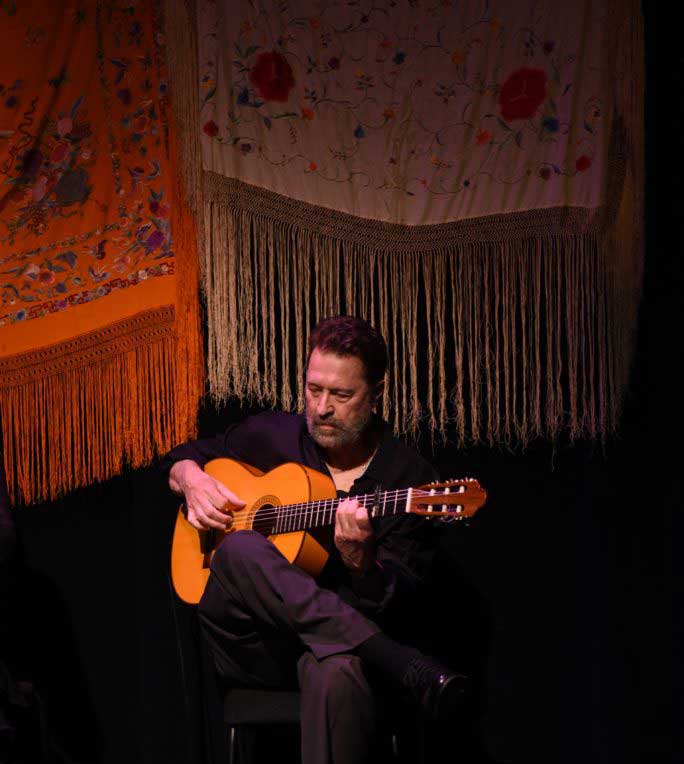Raices
2011Spain’s musical and cultural roots are as layered complex as the country’s history. Consequently, one can easily discover the tangled roots of Flamenco with a little excavation.
Flamenco’s oldest roots are traced back to the Indian subcontinent, more specifically Northwest India and what is now Pakistan. its influence can be seen in a multitude of Flamenco elements such as the aesthetics of hand and finger movements, 12-beat compás cycle, the idea of improvising within a strict musical pattern, contrast of graceful upper body and dynamic footwork, and perhaps most notably, the parallel between the classification of palos and ragas. The Indian characteristics were surely brought to Spain by Gypsies, who arrived in Europe possibly as early as 711 AD.
After being conquered by the Arabs, Spain entered the period in history known as Spain of three religions where the intellectual and artistic activities of Christians, Arabs, and Jews thrived and further formed the distinct Andalusian culture. It was during this time of intercultural, philosophical and inter-denominational tolerance and cooperation that Arabs, Gypsies, and Jews found physical and cultural landscapes resonating with in their oldest rhythmic and melodic memories.
The actual creation of Flamenco didn’t happen until 1492, when the fall of Granada and subsequent ouster of Muslims and forced conversion of Jews created tremendous political and social turmoil. Flamenco flourished, not under the Andalusian sun, but in the caves at night. Flamenco became a voice of protest of dissenting Christians, outlaws, Muslims, Jews, and other social outcasts who did not fit into the new political order. As the Jewish voice was extinguished in Spain after 1492, its crux survived through Flamenco; the forbidden religious prayer became the secular aaiiee of conversos (the coercively converted). There are strong similarities between synagogal chants and early forms of cante.
The actual creation of Flamenco didn’t happen until 1492, when the fall of Granada and subsequent ouster of Muslims and forced conversion of Jews created tremendous political and social turmoil. Flamenco flourished, not under the Andalusian sun, but in the caves at night. Flamenco became a voice of protest of dissenting Christians, outlaws, Muslims, Jews, and other social outcasts who did not fit into the new political order. As the Jewish voice was extinguished in Spain after 1492, its crux survived through Flamenco; the forbidden religious prayer became the secular aaiiee of conversos (the coercively converted). There are strong similarities between synagogal chants and early forms of cante.
Centennial Theatre, Nov 2011
artistic director, choreographer Rosario Ancer
musical director, guitarist Victor Kolstee
kathak dancer Aarti Pole
flamenco dancer Rosaro Ancer, Melanie Meyers, Palma Kontogianni, Rebekah Bull
composer, tar player Amir Koushkani
percussionist Hamin Honari
citar James Hamilton
vocalist Moshe Denburg
gypsy/flamenco singer Jesus Montoya
musical director, guitarist Victor Kolstee
kathak dancer Aarti Pole
flamenco dancer Rosaro Ancer, Melanie Meyers, Palma Kontogianni, Rebekah Bull
composer, tar player Amir Koushkani
percussionist Hamin Honari
citar James Hamilton
vocalist Moshe Denburg
gypsy/flamenco singer Jesus Montoya
